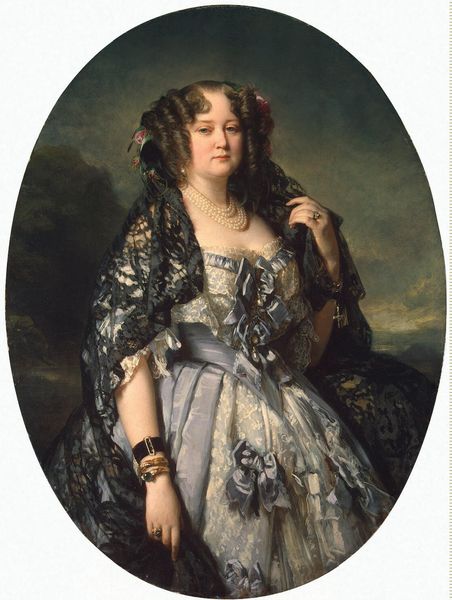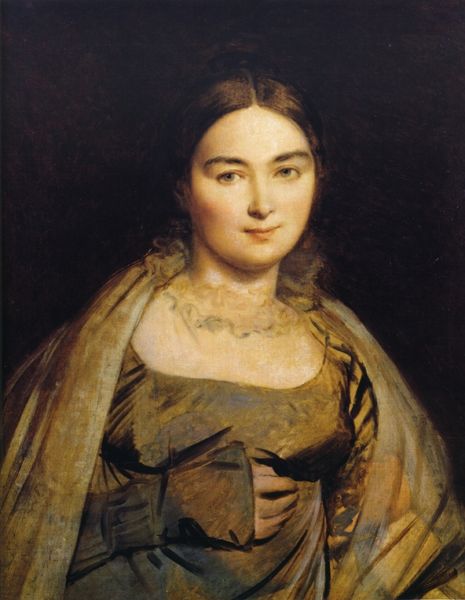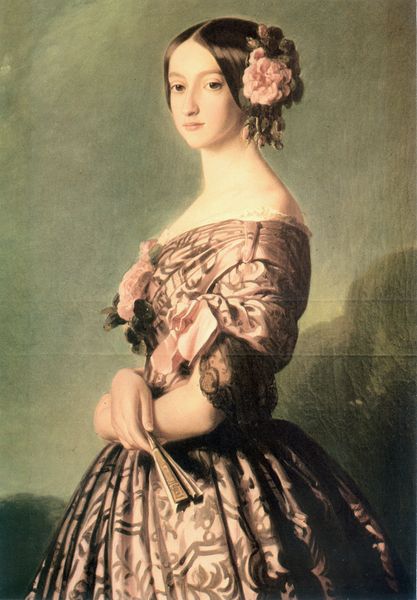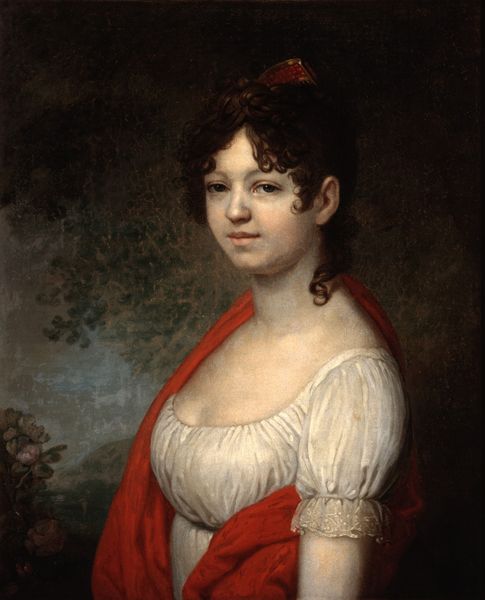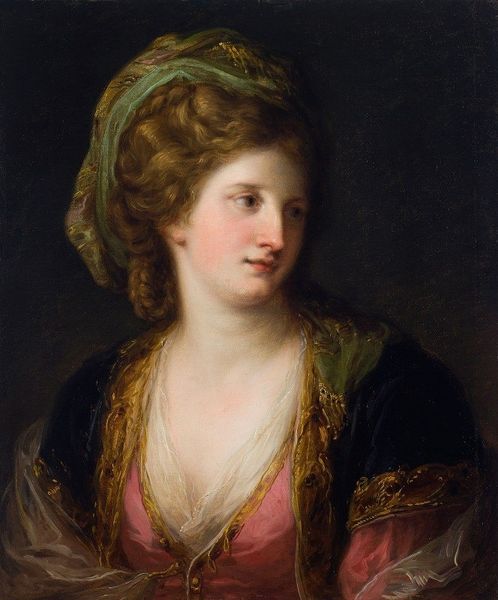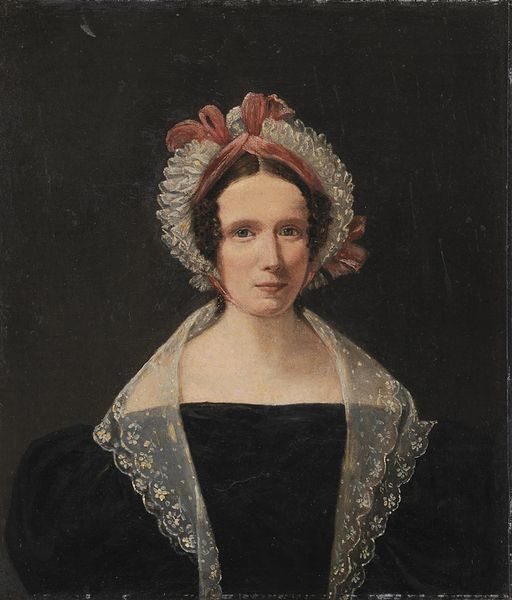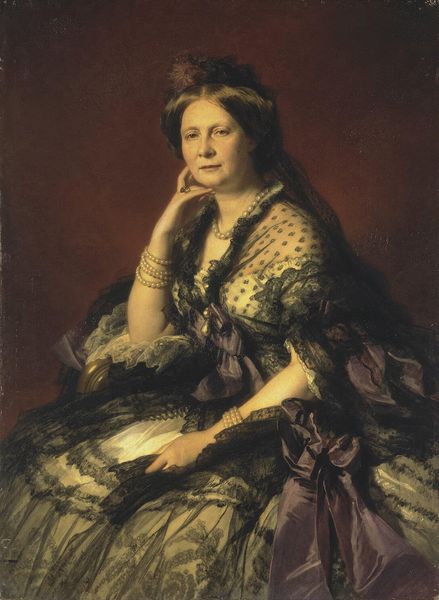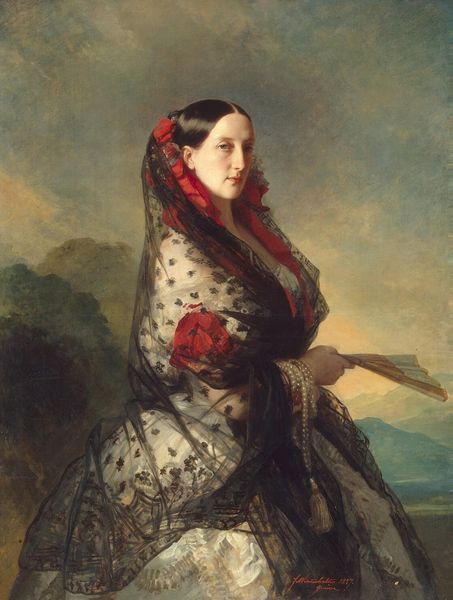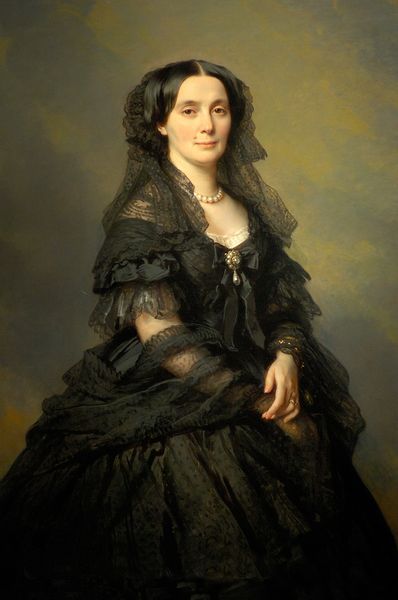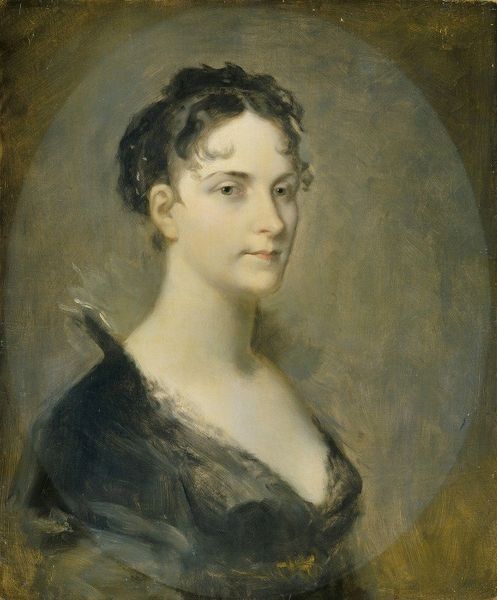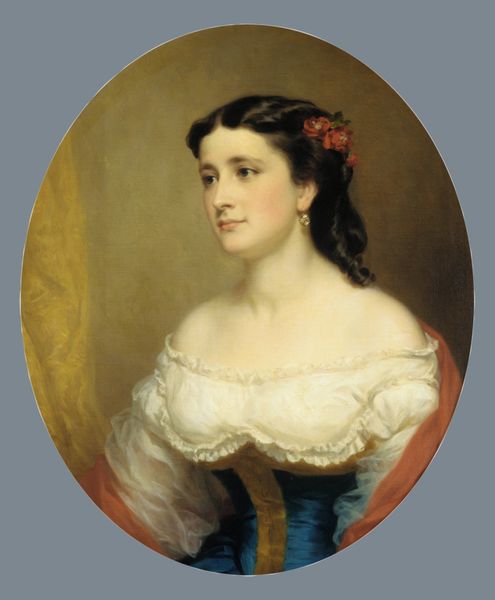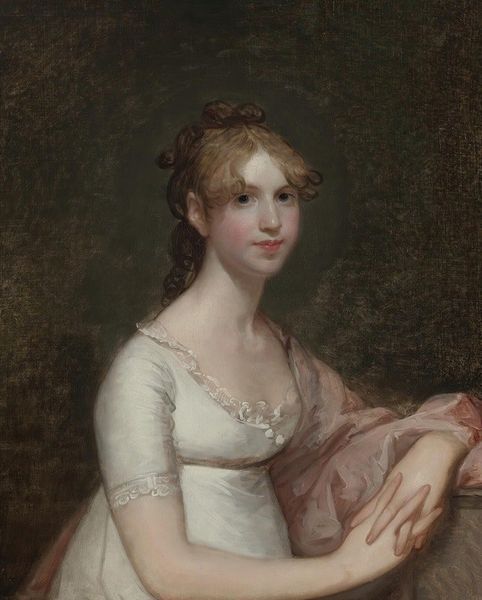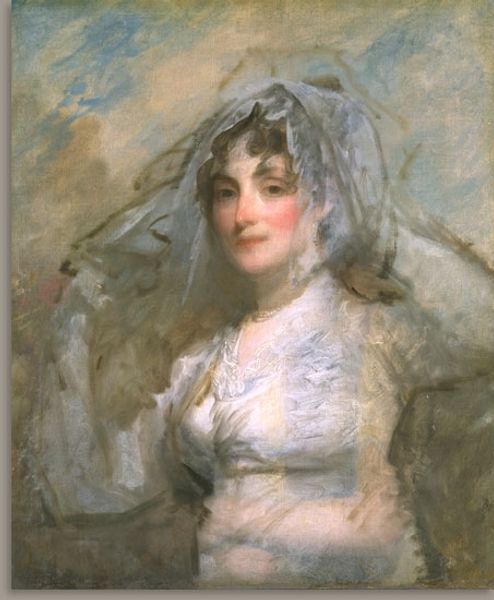
painting, oil-paint
#
portrait
#
painting
#
oil-paint
#
figuration
#
romanticism
#
history-painting
Dimensions: 82 x 54.6 cm
Copyright: Public domain
Francisco de Goya painted Doña Isabel de Porcel, possibly in 1805, with oil on canvas. Here, the delicate lace mantilla, draped over Doña Isabel’s head, speaks volumes. Veils have a long history of symbolic weight, initially signifying modesty and piety, but the gesture subtly evolved. We see similar veils in Northern Renaissance paintings, such as Jan van Eyck’s portrait of his wife. Initially, it was intended to symbolize the virtue of a married woman. Yet, by Goya's time, it became an accessory that concealed and revealed at once, adding an element of allure. It’s a transformation echoed through history, from ancient Roman pallas to present-day haute couture. Think of the psychoanalytic implications; the veil appeals to our curiosity and desire. It’s a tool that engages us on a visceral level. Consider how such symbols resurface, evolve, and take on new meanings, bearing witness to the enduring power of human expression.
Comments
No comments
Be the first to comment and join the conversation on the ultimate creative platform.
